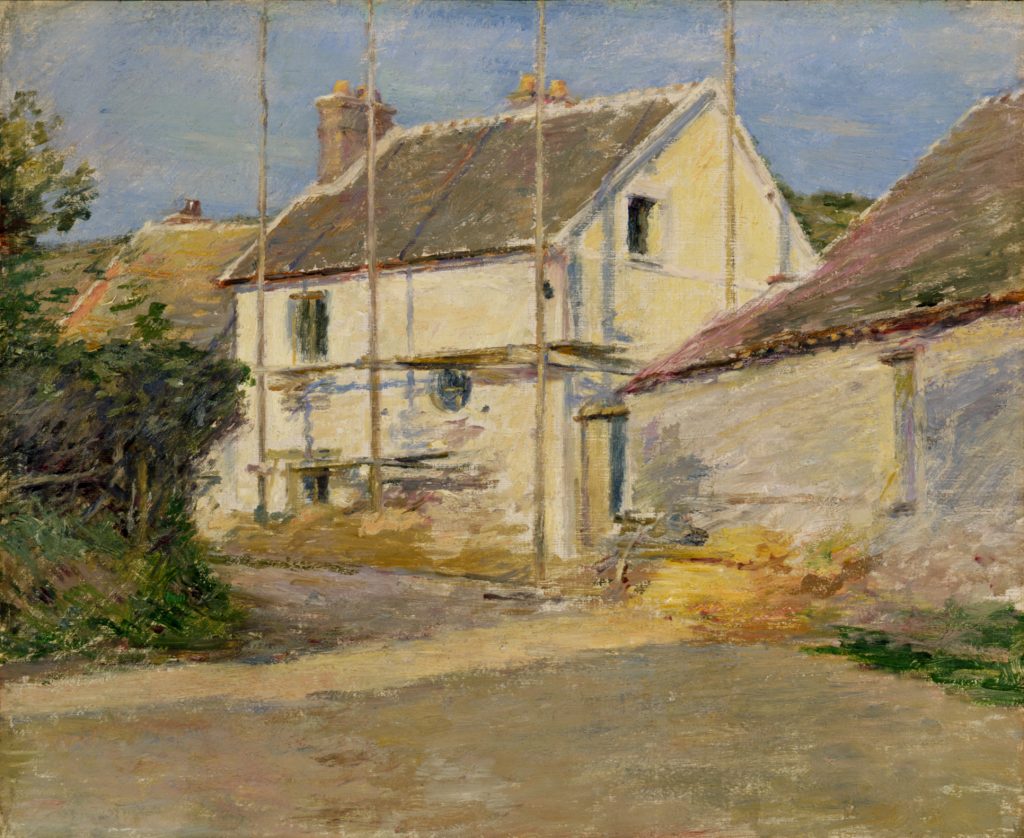Activity Idea: House with Scaffolding, Giverny (Quick Tip)
Use the following strategies to explore Theodore Robinson’s House with Scaffolding, Giverny
Capture the Sunset
Compare Robinson’s House with Scaffolding, Giverny to Monet’s The Cliff, Etretat, Sunset. What does each view communicate about a sunset? What do these paintings share? How are they different? An hour or two before sunset, take a sketchbook and colored pencils/oil pastels outside and find a subject to draw. Document the way the light and colors change on your subject over time.
Shadow Tracking
Look at the shadows projected on the house in Robinson’s painting. Where do you think the sun was located in the sky when the artist painted the scene? What evidence supports your conclusion? Place a white piece of paper flat on a desk. Place an object (small tissue box, water bottle, etc.) in the middle of the paper. Working independently or with a partner, hold a desk lamp or flashlight over the object at 90, 60, and 45 degrees. Trace the shadows you see at each angle. Determine how this activity demonstrates the way the sun casts shadows at different times of day.
Impressionism Is Everywhere
As a class, list places that impressionist paintings appear in our culture (e.g., posters, museums, T-shirts). Brainstorm responses to this question: What are some ways the impressionist aesthetic has infiltrated visual culture? (Ask the following questions if you need help getting the conversation started: How has it influenced film? Photography? Our taste?) As homework, visit a greeting-card store with a partner. Count or estimate a percentage of total cards that look impressionist. Choose one card that successfully matches the true impressionist style and one that does not. As a class, share experiences and compare cards. For fun, choose the class best and worst impressionist look-alike.
A Revolution in Paint
Define the term revolution. List some examples of revolution that come to mind. Does this work of art look revolutionary to you? Why or why not? Read Revolution in Paint [link to Perry’s pages] and investigate why impressionism was considered a revolution. Write a review of this painting from the point of view of a painter who worked in the academic, or more traditional, manner.

